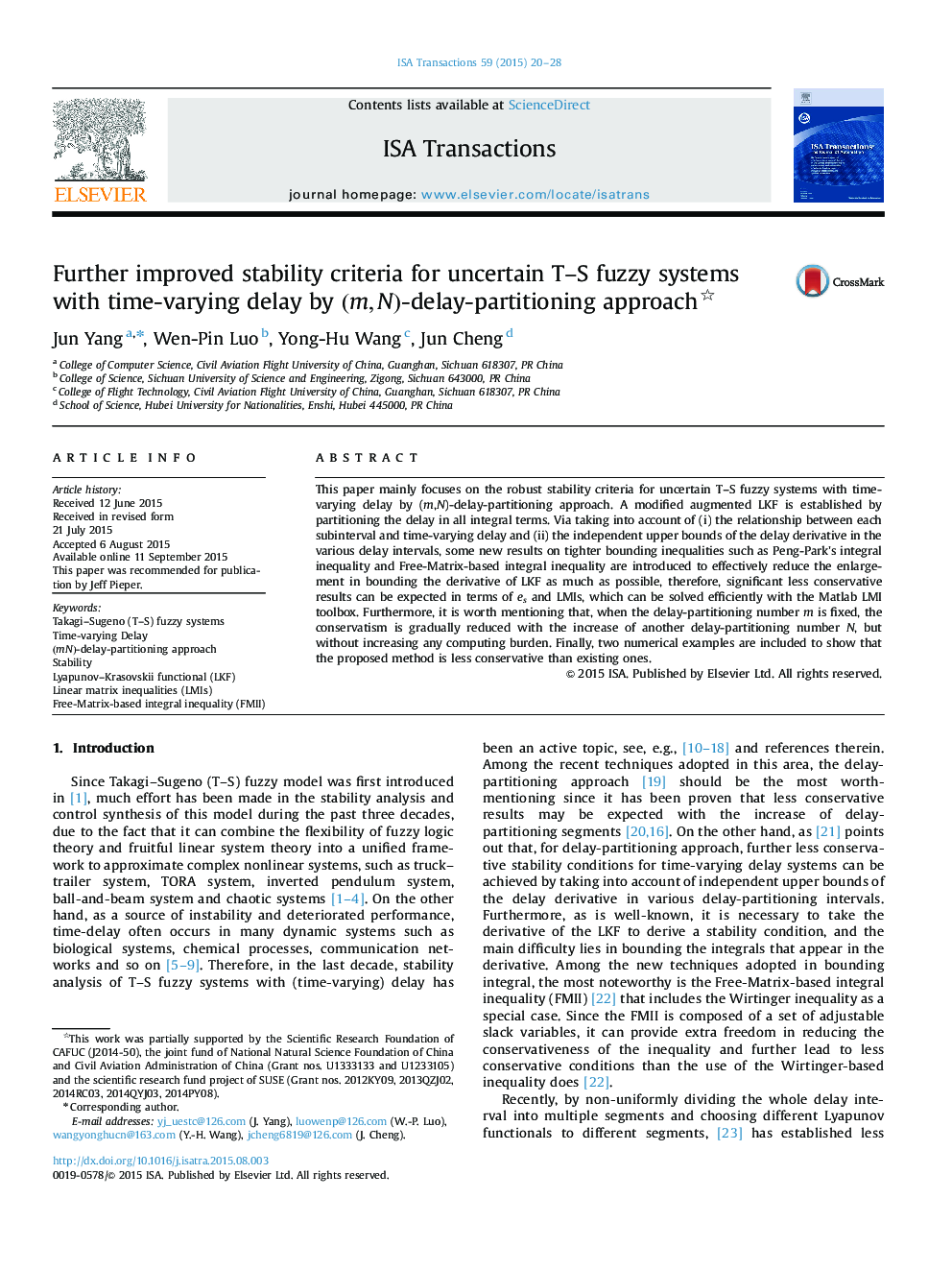| Article ID | Journal | Published Year | Pages | File Type |
|---|---|---|---|---|
| 5004363 | ISA Transactions | 2015 | 9 Pages |
â¢By introducing a new (m,N) -delay-partitioning approach that partitions the time-varying delay Ï(t) and its upper bound separately, this paper aims to develop further improved stability criteria for uncertain T-S fuzzy systems with time-varying delay.â¢An appropriate augmented LKF is established by partitioning the delay in all integral terms, and the Ï(t)-dependent and XijmÃm -dependent sub-LKFs are introduced to the LKF, which make it include more useful augmented state information.â¢The novel Free-Matrix-based integral inequality has been employed to reduce the enlargement in bounding the derivative of LKF as much as possible, therefore, less conservative results can be achieved in terms of es and LMIs.â¢It is worth mentioning that, when the delay-partitioning number m is fixed, the conservatism is gradually reduced with the increase of another delay-partitioning number N, but without increasing any computing burden.
This paper mainly focuses on the robust stability criteria for uncertain T-S fuzzy systems with time-varying delay by (m,N)-delay-partitioning approach. A modified augmented LKF is established by partitioning the delay in all integral terms. Via taking into account of (i) the relationship between each subinterval and time-varying delay and (ii) the independent upper bounds of the delay derivative in the various delay intervals, some new results on tighter bounding inequalities such as Peng-Park׳s integral inequality and Free-Matrix-based integral inequality are introduced to effectively reduce the enlargement in bounding the derivative of LKF as much as possible, therefore, significant less conservative results can be expected in terms of es and LMIs, which can be solved efficiently with the Matlab LMI toolbox. Furthermore, it is worth mentioning that, when the delay-partitioning number m is fixed, the conservatism is gradually reduced with the increase of another delay-partitioning number N, but without increasing any computing burden. Finally, two numerical examples are included to show that the proposed method is less conservative than existing ones.
